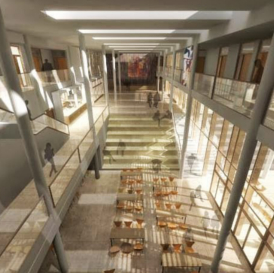Queen Elizabeth School, Wimborne Dorset, UK
A Delmatic Dali system controls lighting within the new BREEAM “Excellent” Queen Elizabeth’s School in Wimborne, Dorset.
The new state of the art campus has the lowest carbon footprint of any new school in the UK, and has set a national benchmark for sustainable, environmentally-friendly design. The project incorporates a number of advanced renewable technologies not previously applied to a building of this type in the UK including woodchip-burning boilers, solar power, rain-water recycling, recycled building materials with low embodied energy, and low energy usage through the building management system and Delmatic’s Dali lighting management system.
Designed to house 1500 students, the new school comprises a campus of five main teaching blocks and a sustainability centre surrounding a “quad” at the heart of the school, which provides space for performance, social gathering, circulation, interaction and learning.
The Delmatic Dali system controls and manages every fitting in the campus providing energy-optimised absence detection with daylight linking and manual dimming override within teaching areas, presence detection with daylight linking in corridors and all open spaces, and absence detection control within toilets. Lighting within the four atria is switched by a combination of calendar timing schedule, solar clock and photocell control, external landscape and parking area lighting is controlled by photocell with time scheduler override, while the main multi-purpose hall is equipped with dimming scene setting controls.
The system also provides Dali testing and monitoring of emergency lighting throughout the campus and emergency tests are scheduled to take place during periods of non-occupancy.
The complete system is managed and monitored through Delmatic’s Lightscape graphical software providing comprehensive reporting functions as well as real-time virtual wiring reconfiguration.
The project was allocated Sustainable Demonstration status and will be used as a national example of sustainable construction. One of only three such projects nationwide, the school not only embodies sustainability within its design but also places the principles of sustainability central to the life of the school and integral to the curriculum. As such, students have influenced the design from the very start and shadow teams of students have, as part of the curriculum, worked with the designers so that pupils learn about sustainability as an integral part of their education.
The school, which has provided education and opportunity to young people for over five hundred years, is now operating within its new school buildings and has been transformed into an inspiring 21st century learning environment.



Architect Feilden Clegg Bradley
Consultant Mouchel
Contractor SES
